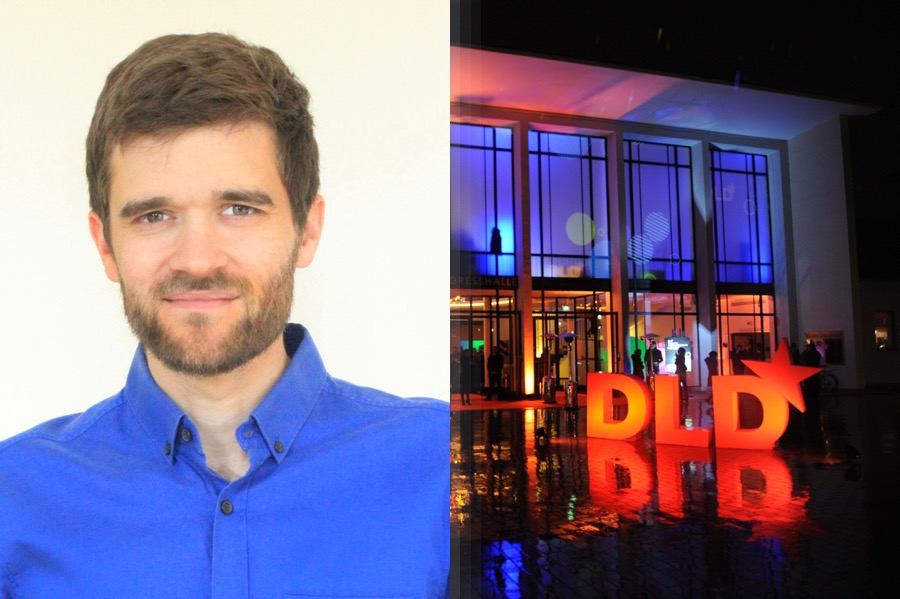For museum directors, the digital revolution is a mixed blessing. Suddenly, they can reach audiences around the world, using videos, Virtual Reality and other interactive technologies to present their collections. On the other hand, museums are now competing for attention with YouTube, Netflix and Facebook as well – in addition to TV, movies, books and radio.
New York’s Metropolitan Museum of Art has decided to wholeheartedly embrace the new opportunities. At DLD 2019, The Met’s Chief Digital Officer, Loic Tallon, will illustrate how art lovers can interact with the museum’s treasures in novel ways. We caught up with him before his trip to Munich.
How do historic paintings, armchairs and statues find an audience in the age of YouTube and Snapchat?
They may be historic artworks, but every artwork was once contemporary. Each item captures a moment of creative expression relating to a question, thought or issue that inspired the artist when they created it. Many of these questions, thoughts and issues are equally relevant to us today – whether it’s about religion and what we as humans are doing on this planet or about trade, migration, meeting new cultures or the rise of a particular country. The Met collection contains over 1.5 million artworks, spanning 5,000 years of human history from around the world: imagine the infinite depth and range of connections that audiences today can make with this collection. The challenge is how to do that in a manner that meets the habits and behaviors of contemporary audiences.
What is your approach to making this connection?
We’re re-thinking what it means for The Met to share its collection. When the museum opened in 1870, the only way for audiences to engage with the collection was in New York City. In the past couple of decades, this has been flipped on its head. We now see the building in New York as only one of the ways in which the museum is fulfilling its mission. Equally important is using digital technology: to truly fulfil our mission in the 21st century, we need to connect with a global audience in simple, compelling and creative ways. For example, we now encourage people to use, and remix, images of our collection in a way that’s most relevant to them. People don’t necessarily think, “Oh, I want to see art” or “I want to go to a museum.” They just want to learn something or be inspired. That’s why we adopted an Open Data practice, releasing all images under a Creative Commons Zero (CC0) license which gives users permission to use them in their own ways.
Which technology do you find most promising?
I’m particularly excited by artificial intelligence. AI offers the ability to process and build relevance from all of our digitized works, at a scale and in ways beyond what has been possible to date. Every artwork at its core has a component of human history inside it. I believe we have objects in our collection that can inspire every person in the world. There are 3.9 billion Internet-connected people in the world. That is our audience. The challenge is how to find the perfect match between each person and the artwork that would inspire them. At that scale, a high-level personalization is impossible if it were to be done by humans. But for an AI it feels like a reasonable challenge. I can imagine creating, say, an “Artwork of the day” feature which is set to the personal preferences of each individual. It could present artworks from a collection linked to your mood, to your location, in your language. Maybe at one point your alarm clock will show a personal “The Met artwork for your day”.
Could artificial intelligence help to unlock hidden connections between cultural artefacts as well, due to its pattern-recognition capabilities?
Absolutely. A human can’t process information across hundreds of thousands of data fields; a machine can. Through image recognition and through analyzing the metadata to start looking for trends, I’m convinced it’s inevitable that AI and humans will start unearthing patterns that we are not aware of. I see AI as two sides of a coin. One side is increasing our research, our knowledge, and the second is disseminating that knowledge. In 2019, there will be some work on AI projects that we will start sharing.
When you visit Munich is there anything that you’re particularly looking forward to?
I’m very excited to see the Dürer self-portrait at the Alte Pinakothek. I’ve never seen it in person, and in my opinion it’s one of the seminal artworks in the world – or even seminal moments of human creation. We’re talking about a painting dating back to the year 1500. This is a time when God was the creator of everything in Western society. That an artists, Dürer, chose to self-represent in that way is an epic, watershed moment. In a way, Dürer’s painting is one of the world’s first conscious selfies. Now we all do this with our smartphones, and we all think, “Oh, I can take a photo of myself. That’s important.” But back in the 1500s that was a very different decision. Dürer’s self-portrait was one of the first self-portraits created in the Western world, and arguably the most ambitious. I’m very excited about seeing it in person, even though I’ve seen it many times in books and on the Internet.


